Tide pools are shallow pools of seawater in intertidal zones, created during low tide. Exploring these ecosystems during low tide when they are exposed and accessible is known as tidepooling.
Welcome to the tenth edition of Letters from a Wanderer!
As you might have guessed from the introduction, tide pools are the focus of this edition. Specifically, the ones we explored on the Oregon coast, where my family spent three weeks at the beginning of this summer.
It wasn’t our first time vacationing on the Oregon Coast. Living in the desert Southwest, we often spend parts of our summer - at least a week, often more -, in the Pacific Northwest, where the Oregon Coast is one of our favorite spots.
Over the years, we stayed in several places along the coast, often in the area near the Three Capes (Kiwanda, Lookout, and Meares). This time, we rented a home near the beach on Cape Kiwanda, the well-known home of the dory boats.
Although I saw plenty of dories leaving and returning, my favorite activity on the beach was tide pooling along the base of the cape.
Tidepooling at Cape Kiwanda
During low tide, we walked out as far as possible towards the edge of the cape, where it juts out into the ocean. The tide was slightly different each time, exposing more or less of the shore and the rocks covered by barnacles and mussels. Sometimes the receding tide allowed us to walk through a tunnel between high rocks, at the base of which more tide pools and crevices offered cover for tiny sand crabs.
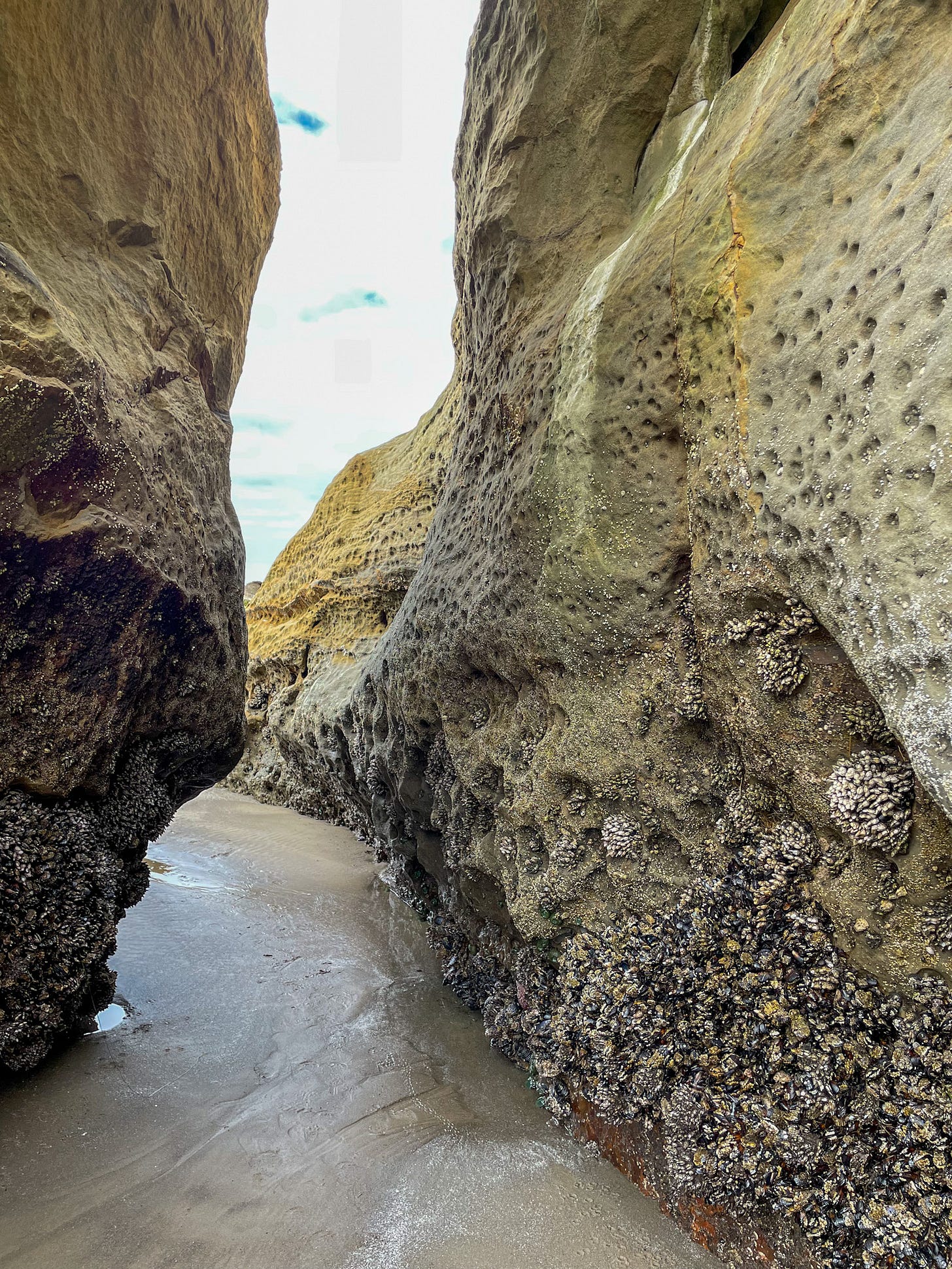
The most spectacular and recognizable tide pool creatures we noticed were orange and purple sea stars and giant sea anemones. Clams and mussels were clinging to the rocks, and tiny black crabs were running around the shallow pools, hiding in crevices as soon as they sensed movement nearby.

And those were only a few of the most noticeable creatures living in and around tide pools. These small, temporary bodies of water are full ecosystems, with many plant and animal species living in them, including snails, barnacles, mussels, anemones, urchins, sea stars, crustaceans, seaweed, and even some small fish.
Sea Stars
Sea stars are not only star-shaped, but they are truly the stars of tide pools. The largest, and most colorful creatures in and near tide pools, everyone notices them first. We often spotted the most common, orange and purple five-limb ones along Cape Kiwanda.
However, as there are over 2,000 species of them, they come in many shapes and colors, including some with ten and more arms. Although they are also called starfish, they are definitely not fish. They don’t swim, but they can “walk” on the ocean floor, thanks to thousands of tiny little tube feet at the end of each arm.
You are not likely to see them walk in tide pools, though. At least I never did. When stuck in a tide pool, they cling to the wet rocks to survive until the next tide comes in, helping them get back into deeper waters.
Invertebrates, related to sand dollars and sea urchins, they can regrow their arms, which makes them the ultimate survivors, allowing them to live up to 35 years old.
Giant Green Sea Anemones
Besides sea stars, the other larger creatures we noticed in the tide pools were giant green sea anemones.
Although calling them giant seems undeserving when you see them, they are some of the largest of the anemones, growing up to 7 inches in diameter, with tentacles over 9 inches long. They get their vibrant green color through pigmentation and through the symbiotic relationship with the microalgae that live in its tissues.
They are most spectacular when open, in the shallow water. To survive though, as soon as the water gets too shallow, the close, resembling green speckled rocks.
Considered solitary, giant green sea anemones also live in groups, so you are likely to find several of them when you notice one. They are carnivores, feeding on crabs, mussels, small fishes and sea urchins.
Several species of sea crab also live in and around tide pools. I only noticed them when they moved; when stopped, they looked like part of the rocks, blending in with their surroundings.
Though I have seen none this time at Cape Kiwanda, one of my favorite inhabitants of tide pools is the purple sea urchin, for its vibrant color. We saw them most often at the Yaquina Head Outstanding Natural Area.
And, though it seems unlikely, considering the small amount of water in tide pools, if you look closely, you can even find tiny fish, like the tidepool sculpin, swimming in them.
Mussels, barnacles, and snails are in abundance in and around tide pools everywhere on the coast. They stick to the rocks and survive even outside of the water.
Tidepool Inhabitants Have Unbelievable Survival Skills
Imagine being a sea creature that gets trapped in one of these shallow pools. Your life won’t be easy, although it may seem like a cozy spot. Tide pools can get pretty hot with the sun beating down on them, so if you want to survive you need to withstand high temperatures. Oxygen levels may drop without the flow of fresh sea water. And, if fighting for simple survival is not enough, you are also exposed to seabirds and other predators looking for their next meal or snack.
You attach yourself to the rock when the tide goes out and must survive in a tiny amount of water until the next tide comes out. So you’ll adapt.
The giant green anemone closes its tentacles, to keep them from drying out when it’s out of water. Sea stars cling to the wet rocks to keep from drying out. Purple sea urchins live in the same areas for generations, and over time, form shallow pits that act as a refuge from giant waves during high tide and form shallow pools at low tide.
Other creatures, like crabs and the tiny fish, use mimicry to survive in tide pools. They look like part of the rock. Their rapid movements might give them away for a second, but as soon as they stop, they seem to become part of the rock again.
Cobble Beach and Other Places Along the Oregon Coast We Explored Tide Pools Over the Years
Our favorite place to explore tide pools is at Yaquina Head. Known as home of the tallest lighthouse on the coast, Yaquina Head is also a protected natural area, with tide pools to explore on Cobble Beach.
You won’t find sand on this beach, instead, you walk on smooth round black polished rocks. They roll and are slippery when wet, so walking on this beach is not easy. You also needed to watch out for sea creatures in the wet areas, so you don’t step on them.
The cobblestone beach, a natural wonder of the Oregon Coast, was created by the basalt lava flow of the Columbia River about 14 million years ago. Over the years, water and wind turned the rough lava into these smooth black, rocks. When tides come and go, the pebbles shift, creating tide pools in different areas.
Besides the unique cobblestone beach, the Yaquina Head tidepools offer a learning opportunity, since this is where park rangers and naturalists set up a learning center during low tides and are available to talk about tide pools, and all the creatures living in them - and along the shore.
Cobble Beach is also one of our favorite spots to watch harbor seals and seabirds, living on the sea stacks, offshore rocks, and islands near it. When we visited early in the season, we even saw migrating gray whales from the observation deck.
Over the years, we also explored tide pools at the Heceta Head beach, and on the beach at Oceanside.
You can read more about our family’s adventures in tidepooling on the Oregon Coast on Wanderer Writes:
Did you have any experiences tidepooling - on the Oregon Coast, or anywhere else? Please share your experience, if you did.
Finally, if interested, you can find more of my travel articles on my main travel site:
Thank you for reading, and Happy Travels,
All the best,
Emese








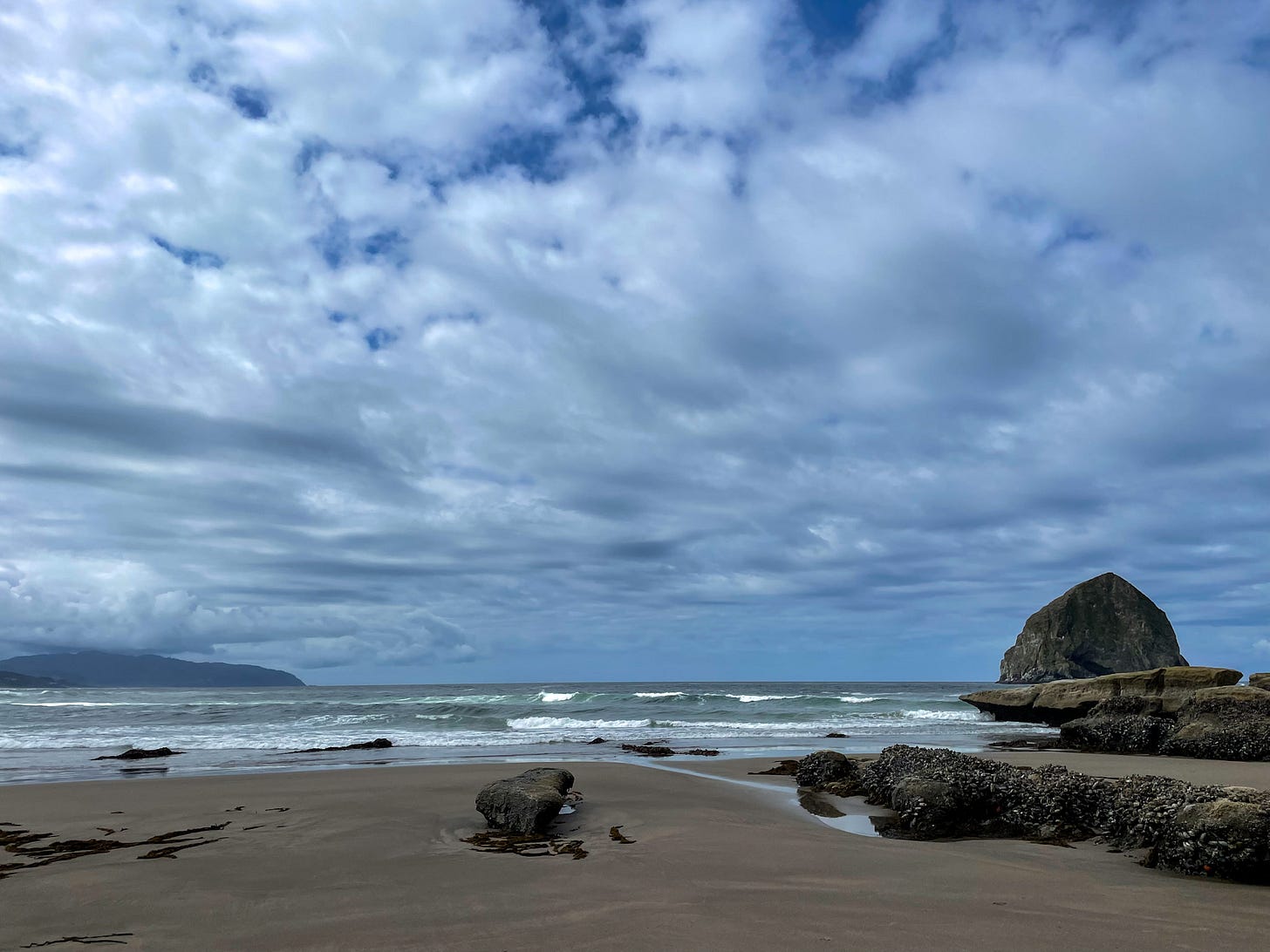

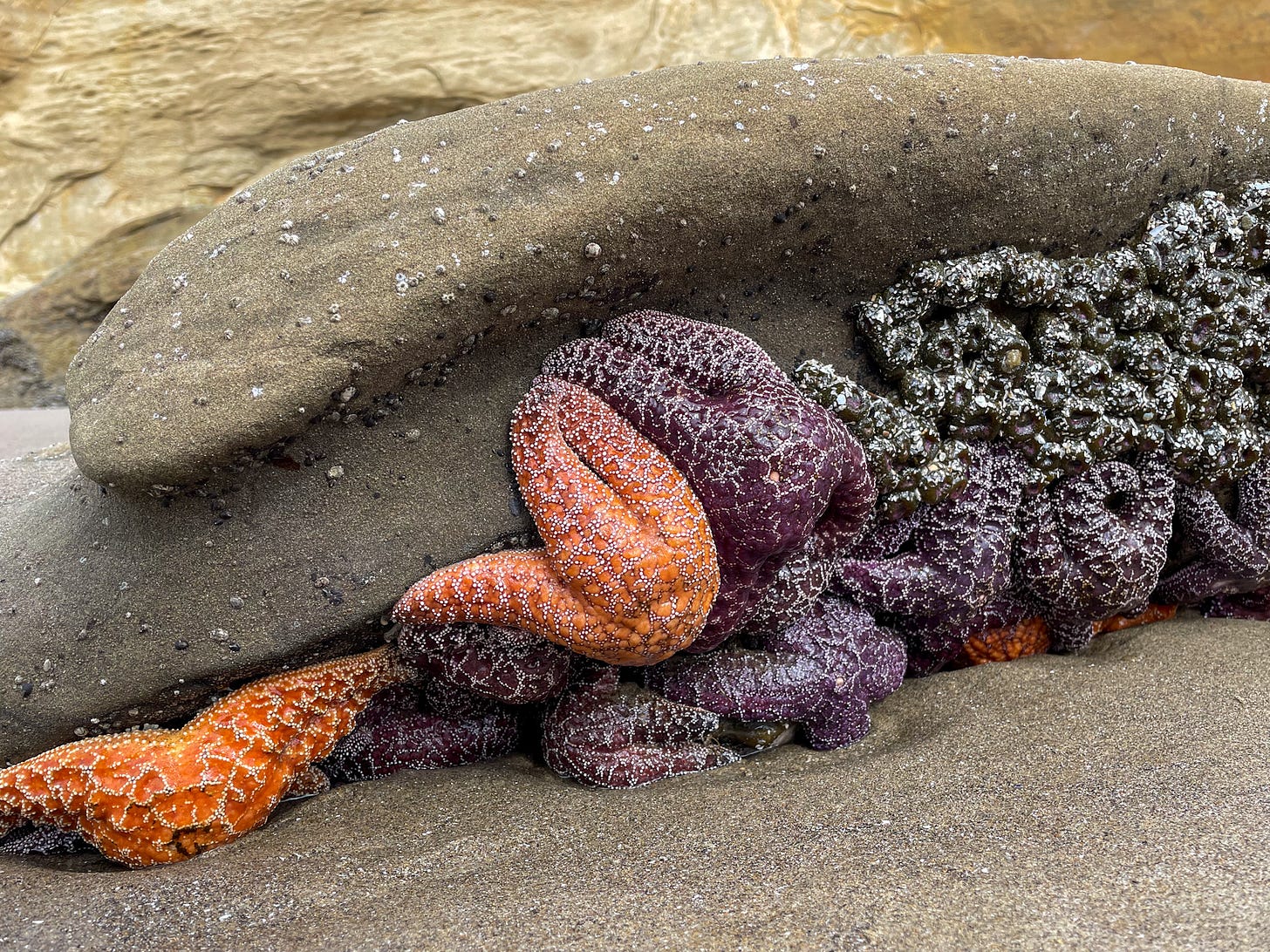


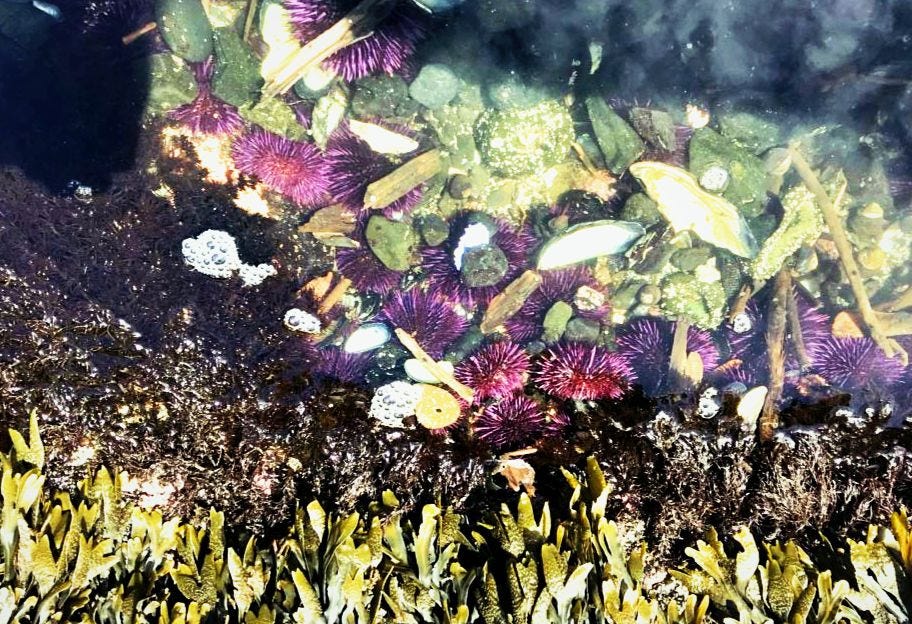


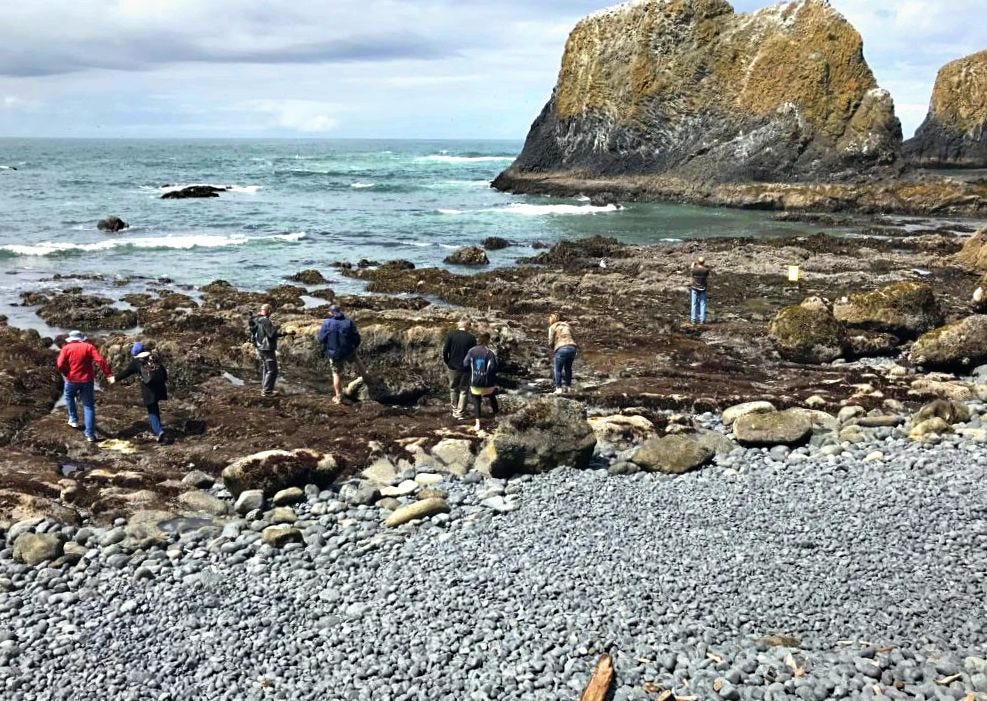







I love tidepooling! I first discovered tide pooping just a few years back in Maine at Acadia National Park. I've tidepooled in Oregon but my absolute favorite place that I've tidepooled was along the Lost Coast Trail in California. We walked the trail starting at sunrise which coincided with low tide. It was stunningly beautiful and we saw all kinds of sea creatures in the pools.